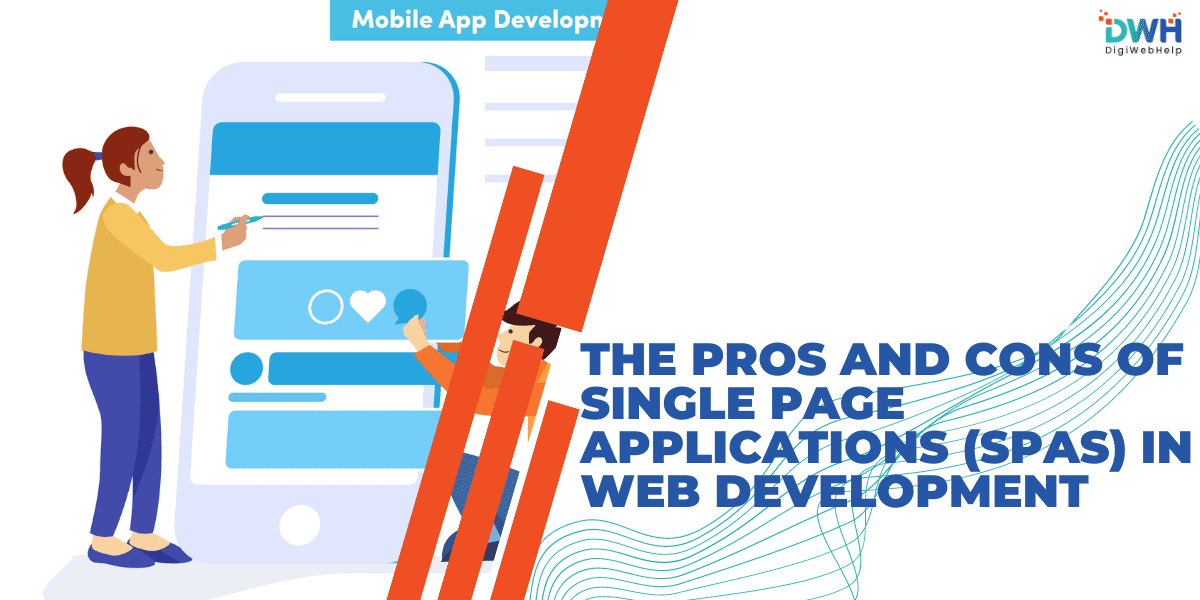
The Pros and Cons of Single Page Applications (SPAs) in Web Development
Single Page Applications, or SPAs, have emerged as a significant trend in the modern web development world. These applications provide a dynamic, app-like experience within your browser. SPAs stand out from the traditional multi-page applications (MPAs) because they load a single HTML page and dynamically update content as users interact with the app.
This approach has become increasingly popular for creating responsive and seamless user experiences. However, while SPAs offer several advantages in web development, they also have a few challenges. Understanding both sides of the coin is essential before deciding if SPAs are the right choice for your project.
What is a Single Page Application?
A Single Page Application is a type of web application that loads all necessary resources at the start or loads them dynamically as needed. Moreover, the app doesn’t require a full page reload during user interaction. This contrasts with traditional multi-page applications where each interaction triggers a full page refresh. SPAs rely heavily on JavaScript frameworks and libraries such as React, Angular, and Vue.js. These frameworks handle client-side rendering and manage application state.
Popular examples of SPAs are Gmail, Facebook, and Twitter, where users interact with content without experiencing page reloads.
How SPAs Work?
The architecture of SPAs or Single Page Applications revolves around client-side rendering. The browser executes JavaScript to render the content dynamically. The backend typically serves as an initial HTML page, and API endpoints deliver data as JSON. The front-end JavaScript code processes and displays this data.
Key technologies that power SPAs include JavaScript frameworks like React and Angular. These simplify development by providing tools and libraries for creating responsive and interactive user interfaces. SPAs load content by fetching data asynchronously from the server and upload data without full page reload. This leads to a seamless user experience.
Pros of Single Page Applications
- Improved User Experience
The most significant benefit of SPAs is the improved user experience. SPAs offer faster load times because they load the entire application at once. Subsequent interactions do not require full-page reloads, resulting in smooth and uninterrupted navigation. This feature is especially beneficial for applications where users expect a seamless experience.
- Efficient Performance
SPAs are designed to be efficient in terms of server load. Since the application only fetches and renders necessary data, there is less data transfer between the user and the server. This reduces the server load. SPAs can also leverage caching mechanisms to store data locally to enhance speed and performance.
- Better Mobile Experience
SPAs are well-suited for mobile devices as they offer a responsive design that adapts to various screen sizes. The app-like experience with smooth transitions and fast load times is perfect for mobile users who demand quick and efficient interactions.
- Easier Debugging and Testing
Developers often find debugging and testing SPAs easier due to their centralized codebase. Many tools and extensions are designed especially for SPA development, facilitating issue identification and resolution. The single codebase ensures consistent testing across various devices and platforms.
Cons of Single-Page Applications
- SEO Challenges
One of the key drawbacks of SPAs is the challenge they pose for SEO. As SPAs rely on client-side rendering, search engine bots may struggle to index the content effectively. Developers can use workarounds like server-side rendering and pre-rendering. But, they can add complexity to the development and may not fully resolve the SEO concerns.
- Initial Load Time
SPAs offer faster page navigation once loaded. But, initial loading can take more time than MPAs. This is because SPAs usually load all the necessary resources at once. This can result in slower initial load time, especially for users with slow internet connections.
- Increased Complexity
The development and maintenance of SPAs can be more complex than MPAs. Managing the application’s state, handling client-side routing, and ensuring smooth browser history management requires careful planning and expertise. Additionally, the use of JavaScript necessitates that developers to be familiar with modern JavaScript frameworks and tools.
- Security Concerns
SPAs are more vulnerable to security issues, especially those related to client-side scripting. For example, SPAs are susceptible to Cross-Site Scripting (XSS) attacks, where malicious scripts might be injected into the app. It’s important to have robust security measures like input validation and proper use of content security policies. This helps protect SPAs from such vulnerabilities.
When to Use Single Page Applications
SPAs are best suited for dynamic and interactive applications where a seamless user experience is essential. Examples include social media platforms, online marketplaces, and SaaS applications. However, SPAs might not be suited for content-heavy websites or projects where SEO is a primary concern. In such cases, a traditional multi-page application might be a better fit.
SPAs vs. Traditional Multi-Page Applications
It is essential to consider your project’s specific needs when comparing SPAs against MPAs. SPAs excel in performance and user experience for interactive applications, but MPAs might be a better fit for sites heavy on content where SEO and initial load times are more critical. Each approach has its own pros and cons, and your choice between a SPA and an MPA should be based on your project’s specific requirements.
Conclusion
Single Page Applications offer a compelling option for creating responsive and engaging web experiences. However, they also come with challenges that must be carefully considered, particularly in terms of SEO and security. By understanding the pros and cons of SPAs, developers can make informed decisions about when and how to use this powerful web development approach.










